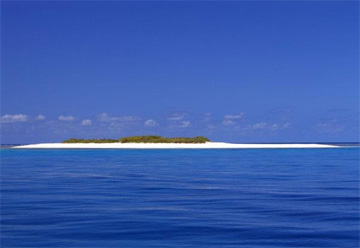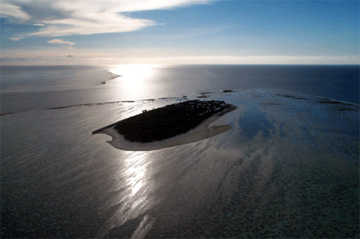|
|
The reasons behind the colonization of the Pacific islands have long been sources of controversy and fascination. Now a new study looks into toxic fish poisoning as a possible migration catalyst.
Between AD 1000 and 1450, Polynesian colonization of the South Pacific flourished. The voyages that were undertaken in the discovery of these new lands were very dangerous and the people who conducted them undoubtedly had good reasons to do so. Researchers from the Florida Institute of Technology have performed research which shows that toxic ciguatera fish poisoning would provide sufficient impetus for such risky voyages.
Ciguatera fish poisoning occurs when fish inadvertently ingest toxic species of dinoflagellate microbes while swimming through infected areas. The toxin then accumulates in the food chain, reaching high levels in predatory fish such as tuna and barracuda.
|
|
Ciguarera poisoning in humans is characterized by gastrointestinal, cardiovascular, and neurological symptoms, with extreme cases resulting in paralysis or death. Currently it affects between 50,000 and 500,000 globally per year, mostly in tropical and sub-tropical areas. Today, alternative food sources are available when ciguatera fish poisoning occurs; this was often not the case prior to the last century, with exploration of and subsequent migrations to unaffected islands the only course of action if local fish populations became compromised for long periods of time.
For their study, researchers examined archeological and anecdotal evidence along with climatic data, revealing a loose correlation between high sea surface temperature and ciguatera outbreaks in the South Pacific. They analyzed ice cores which revealed the possibility of heightened temperatures during the period of time when many colonizing voyages are thought to have occured.
They also looked at modern migrations influenced by ciguatera fish poisoning. In the 1990s, for instance, 18% of the residents of the Cook Islands emigrated to New Zealand and Australia because ciguatera affected the islands’ coastal fish populations and the the costs of alternative, imported foods were above their means.
Until relatively recently, the South Pacific was thought to have been randomly colonized by a few intrepid individuals who found habitable islands mostly by chance. This is now known to be untrue. The Polynesians possesed advanced boat-building technology and navigational techniques with which they systematically explored the ocean, established colonies, and created far-reaching trade networks from AD 1000 to 1450 when inter-island exchange diminished and a period of relative isolation began.
|
|
There are a variety of possible reasons for this shift with perhaps the most notable being the introduction and increased reliance on domestic animals (chickens, dogs, pigs, etc.). Basically, the Polynesians didn’t have to maintain extensive trade networks or undertake mass migrations if they could simply turn inland to their livestock whenever ciguatera struck.
With the introduction of global trade, Pacific Islanders gained more alternatives to local fish. Unfortunately, most of these foods are highly processed and have large amounts sodium, sugar, and fat while offering little in the way of real nutrution. Because of this, native Pacifc Islanders have one of the highest rates of obesity in the world, with correlative high rates of diabetes, heart disease, and stroke.
Many people exclude fish from their diets because of fears of ciguatera poisoning, relying extensively on other (usually processed) foods. For instance, 71% of the residents of Rarotonga in the Cook Islands avoid coastal fish for this reason.The aim of this study was not only to uncover the motives behind historical voyages, but to also find a way to predict possible ciguatera outbreaks before they occur and thus provide a warning system to island residents.

